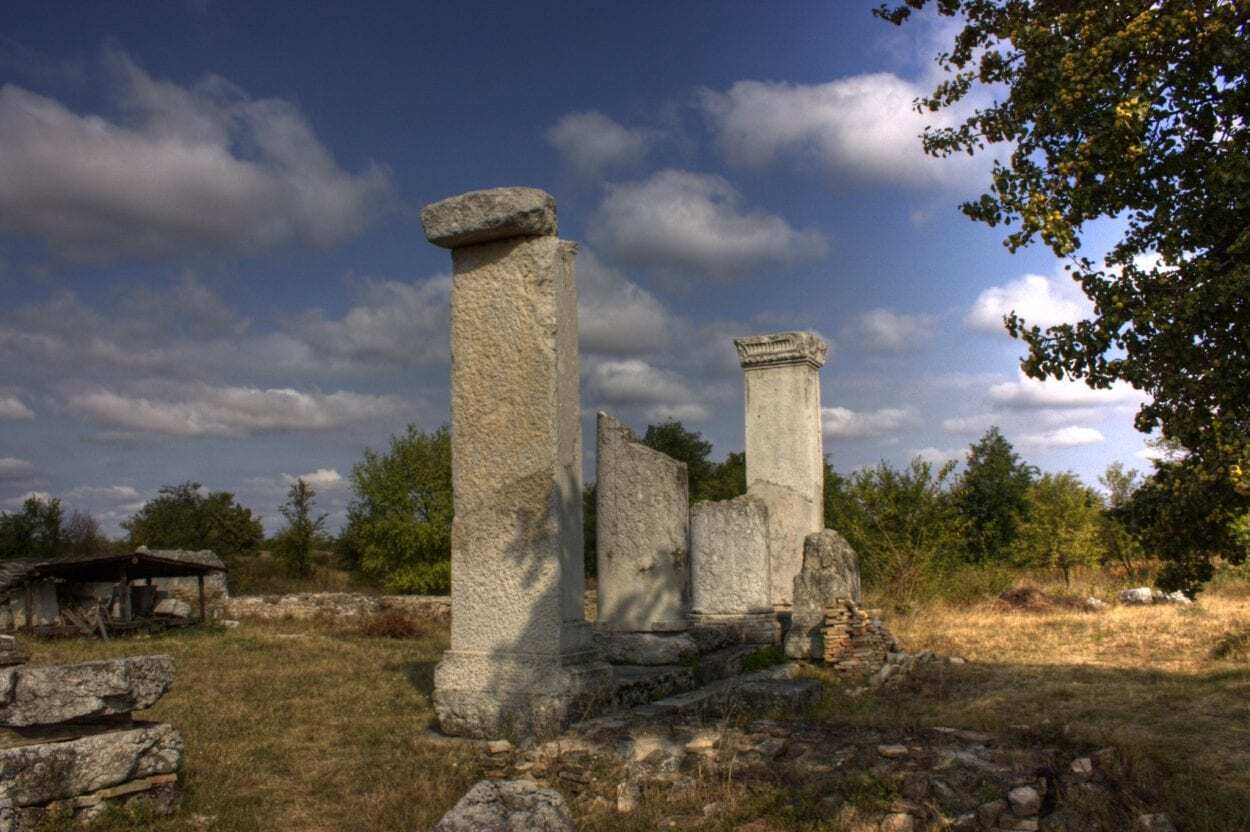Nicopolis ad Istrum, also called Nicopolis ad Iatrum is an ancient Roman and Byzantine city, located near the present-day village of Niyup in northern Bulgaria.
The construction of the city is attributed to the victory of the Dacian Wars by Emperor Trajan in AD 106-107, as indicated on scene XXXIX of Trajan’s Column (a triumphal column in Rome).
The site for Nicopolis ad Istrum was chosen on an elevated plateau at the junction of the roads to Danubium and to Philippopolis, overlooking the crossing of the Yantra and Rositsa Rivers (which was where the Roman army had previously amassed in preparation for an attack by the Roxolani tribe in AD 101-2).
The city was planned in an orthogonal system, consisting of linear street grids covering an area of 74 acres surrounded by outer city walls, and with a central forum encircled by a lonic columnade. Various public buildings were constructed, including a three-nave basilica, a bouleuterion, a temple of Cybele, a small odeon, thermae (public baths), and three aqueducts.

The prosperity of Nicopolis ad Istrum seemed to be intertwined with the political status of the Empire at the time. During the Severan dynasty in the 2nd century AD, the city supported Lucius Septimius Severus in his bid to rule after the death of Emperor Pertinax in AD 193 (during the Year of the Five Emperors). This led to a growth in the city’s fortunes, with Septimius offering his personal gratitude to the inhabitants for their support.
Dynastic rule continued with Caracalla (son of Septimius Severus), but historians believe that Nicopolis ad Istrum fell out of favour with the new Emperor. Caracalla removed the status of civitas stipendaria and closed the city’s mint, resulting in an economic decline. With the murder of Caracalla, the city organised a series of games in dedication to the next Emperor, Macrinus. Nicopolis ad Istrum regained its civic status and was allowed to re-open the mint.

Over the following centuries, the city continued to thrive until AD 447 when the town was destroyed by Attila’s Huns. The city contracted to ¼ its original size and constructed new defensive walls that protected military buildings and churches.
The city became an episcopal centre during the early Byzantine period but was once again destroyed in the late 7th century during the Avar–Byzantine wars by Avars and Slavs.
Header Image Credit : Klearchos Kapoutsis – CC BY 2.0





